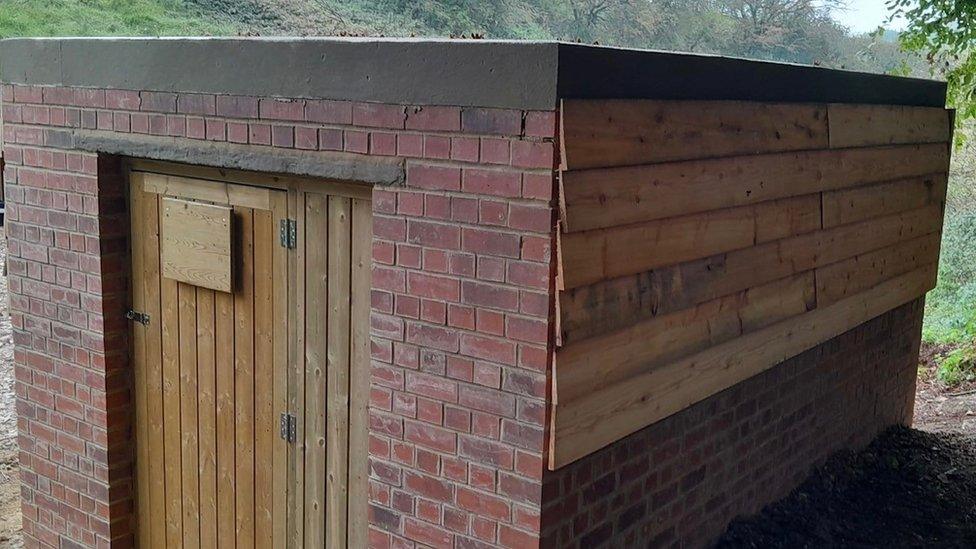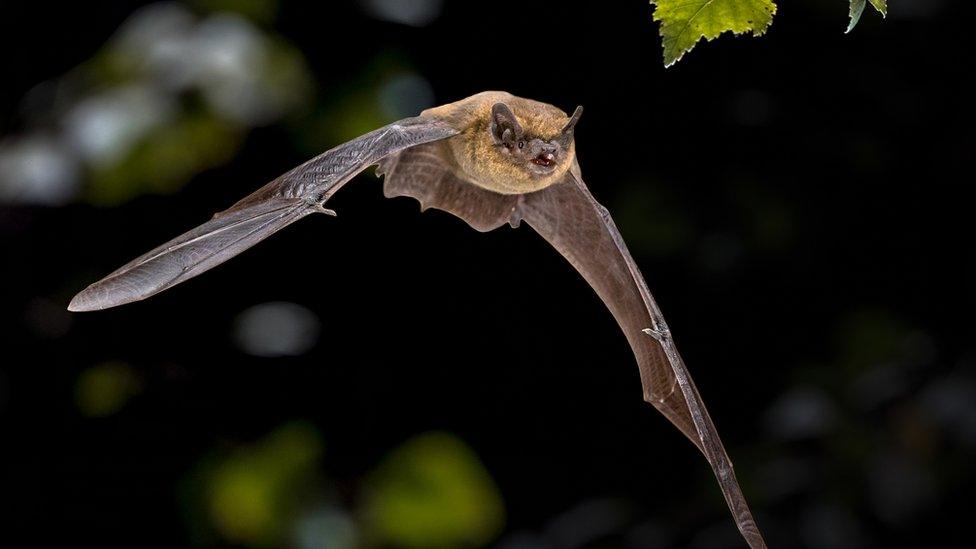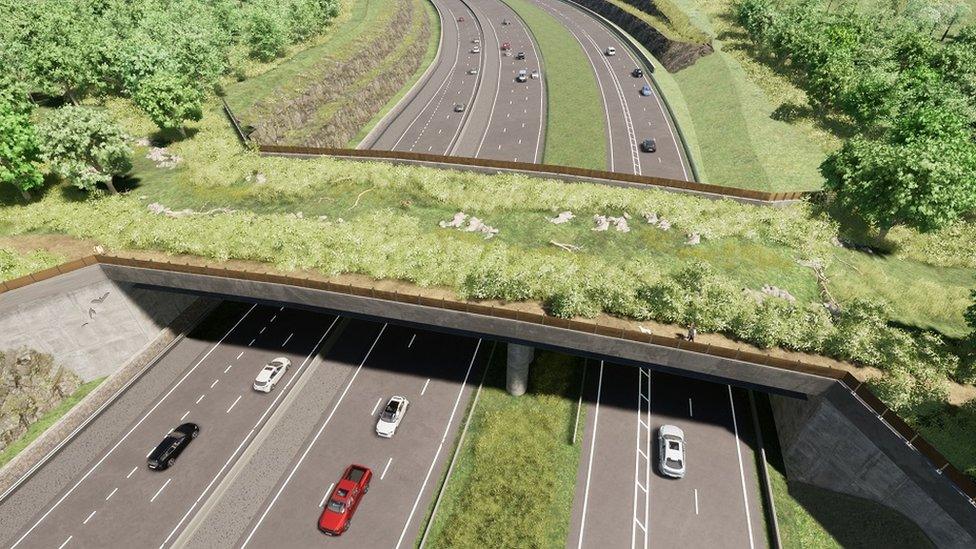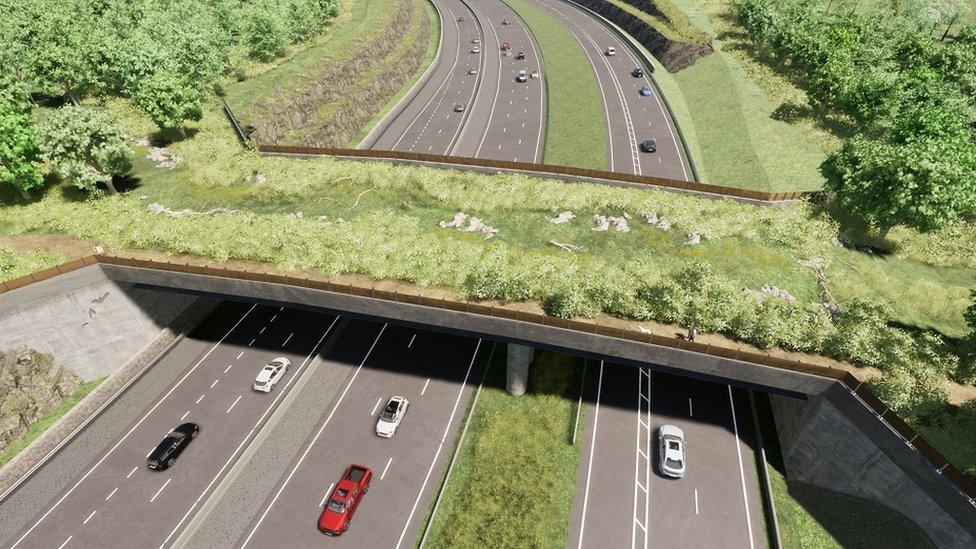Gloucestershire WW2 bunker to be converted into home for bats
- Published

The World War Two bunker will be transformed into a habitat for bats
A World War Two bunker is being brought back into use as a home for bats in a bid to protect the wide number of species in Gloucestershire.
National Highways is converting the bunker and installing bat boxes as part of the A417 Missing Link road scheme.
A bypass will be constructed between the Air Balloon and Cowley roundabouts as part of a £460m project.
The bunker is expected be home to a number of UK species including the Lesser Horseshoe and Brown Long Eared.
Three other bat structures will also be developed during the scheme, along with the planting of trees, hedges and woodland to improve sustainability, National Highways said.

The bunker is expected be home to a number of UK species
The A417 Missing Link project near Gloucester will bypass the Air Balloon roundabout in a bid to improve the notorious traffic bottleneck and accident blackspot.
The approved set of plans will see 3.4 miles (5.5km) of new dual carriageway built in the section of road which carries about 40,000 vehicles a day.
This will follow the route of the current A417 but will swing away before it reaches the Air Balloon roundabout.

Plans include a 37m wide crossing, allowing users of the Gloucestershire Way to cross the A417
Celine Acard, senior project manager, said: "When situated alongside linear infrastructure, such as A-roads, habitats can create crucial corridors for pollinating insects, birds and small mammals, enabling wildlife to permeate the wider landscape.
"It's vitally important that we protect the surrounding countryside and wildlife that makes its home there when we build these transformative schemes."
Natasha James, ecological clerk of works, said: "Bats will feed within the area around their roosts, which can be up to 10km or more depending on the species.
"It is therefore important that we provide habitat protection throughout our site as the bats fly between their roosts and feeding grounds."
As well as bats, the work will also include relocating baby common lizards, slow worms, snails and adders.

Follow BBC West on Facebook, external, Twitter, external and Instagram, external. Send your story ideas to: bristol@bbc.co.uk , external
Related topics
- Published16 November 2022

- Published17 August 2010
- Published28 April 2022
